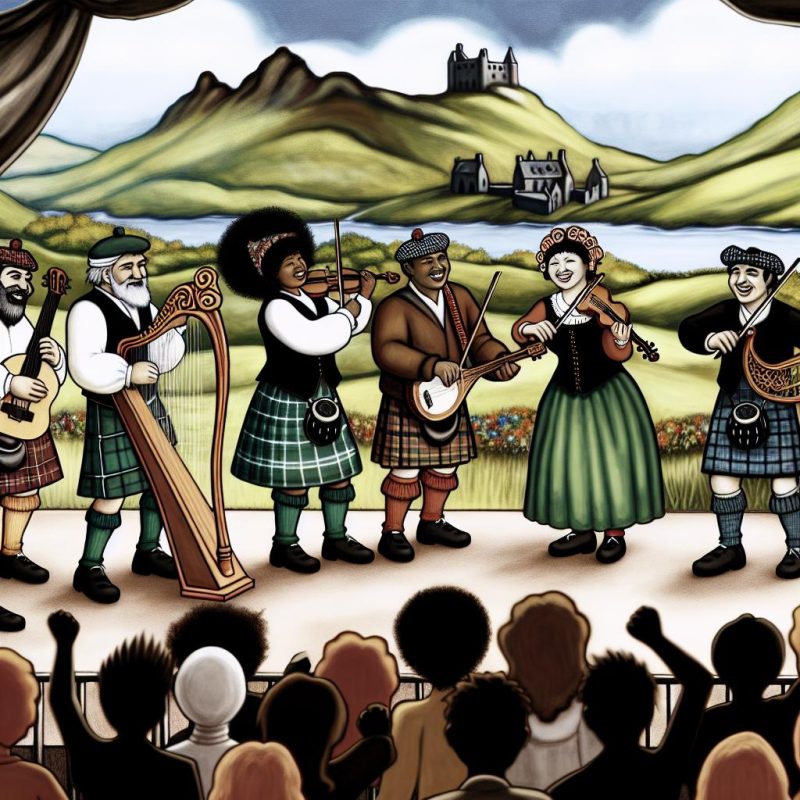The Historical Roots of Gaelic Music in Argyll
Gaelic music has played a significant role in shaping the cultural landscape of Argyll, a region in western Scotland with a rich Celtic heritage. The origins of Gaelic music in this area can be traced back to the arrival of the Gaels from Ireland, who brought with them their musical traditions. Over centuries, these traditions evolved gradually while incorporating local influences. They became integral to the identity of the community, reflecting not only the historical roots but also the living culture of Argyll.
Traditional Instruments
The music of Argyll is distinctively characterized by the use of several traditional instruments. Among these, the bagpipes and harp hold particular significance. These two instruments are emblematic of the region’s rich musical history. While the bagpipes are universally recognized as a symbol of Scotland, the harp, or clarsach, is deeply rooted in Gaelic musical tradition. Each instrument carries its own unique history and manner of use, contributing to the robust array of sounds that define the region’s musical landscape.
Additionally, the fiddle stands out prominently in Gaelic music, offering a resonant and expressive quality that adds depth to the ensemble. Fiddle music often accompanies dance and social gatherings, showcasing the instrument’s versatility. This trinity of instruments—bagpipes, harp, and fiddle—is fundamental to understanding the musical traditions that have flourished in Argyll.
Forms and Styles
Gaelic music encompasses various forms and styles that speak to the natural beauty and historical narratives of Argyll. The immersive experience of these musical forms allows listeners to appreciate Argyll’s natural landscapes and historical depth. Notable among these forms are the waulking songs—these rhythmic, call-and-response songs were traditionally sung by women as they worked together to soften woven cloth. Such communal activities helped in the preservation of these songs across generations.
Another fascinating aspect of Gaelic music is puirt-à-beul, or “mouth music”. This form involves rhythmically complex and upbeat vocal performances meant to provide the rhythm for dancers in the absence of instruments. Thus, they represent an intricate blend of linguistic prowess and musicality. Both waulking songs and puirt-à-beul illustrate how music was historically woven into the daily lives of the people in Argyll.
The Influence of Language
The Gaelic language exerts a profound impact on the music of Argyll, acting as both a medium and muse for the songs. This linguistic element allows songs to convey intricate stories, historical events, and cherished cultural practices. The use of the Gaelic language in music highlights its role as a cultural cornerstone. The preservation and promotion of the Gaelic language through music is a testament to its inseparable connection to the region’s musical heritage.
Language breathes life into the music, infusing it with stories that capture the essence of the community’s experiences. Through music, the Gaelic language maintains its vibrancy and relevance, fostering a sense of identity and continuity within the community.
Modern Developments
In the present day, Gaelic music continues to thrive in Argyll, owing much to the dedicated efforts of local communities and cultural organizations. The traditions of old are kept alive, and at the same time, new interpretations and creations are encouraged. Festivals and events, such as Ceol Cholasa on the Isle of Colonsay, exemplify how contemporary gatherings celebrate and promote Gaelic music. These events act as convergence points for tradition and innovation, where contemporary artists draw on their heritage while experimenting with new forms and styles.
Several resources are available for those interested in deepening their understanding of Gaelic music in Argyll. Information on relevant events and educational opportunities is often accessible through entities such as An Comunn Gàidhealach, an organization dedicated to promoting Gaelic language and culture. Their work ensures that both the cultural heritage and the modern manifestations of Gaelic music are passed onto future generations.
Conclusion
Gaelic music remains a vital element of cultural expression in Argyll. Its influence is not confined to mere tradition; rather, it encapsulates the spirit and history of the region. The ongoing preservation and innovation within Gaelic music speak to its dynamic and evolving nature. As a form of cultural expression, Gaelic music invites listeners and participants to engage with a rich tapestry of sounds and stories that continue to resonate today.
For those interested in the broader cultural and historical aspects of Gaelic music, Argyll offers a remarkable journey through its musical soundscape. This music, deeply tied to the land and its people, offers insights into a unique cultural heritage that continues to thrive in the modern era, ensuring that the traditions and innovations of Gaelic music remain vibrant for years to come.

